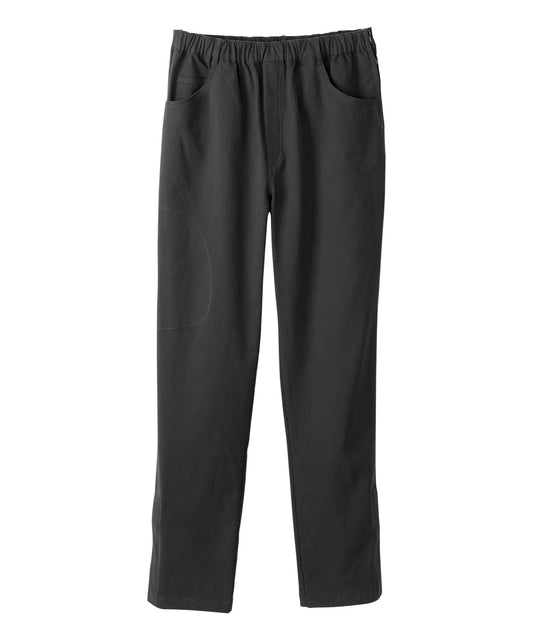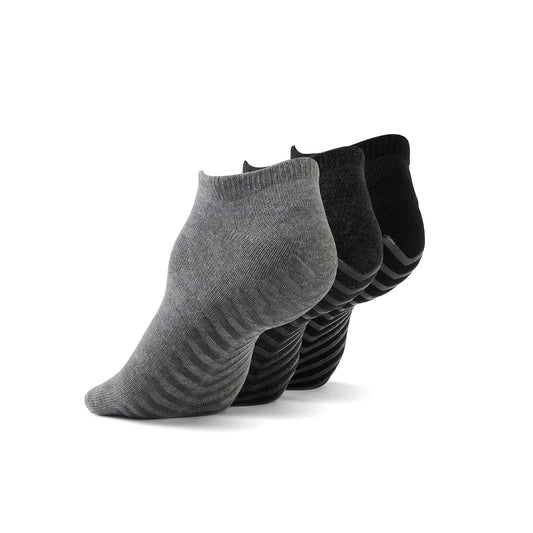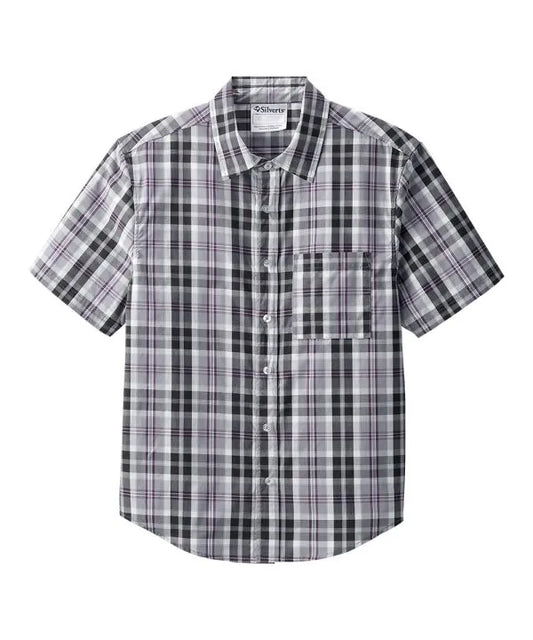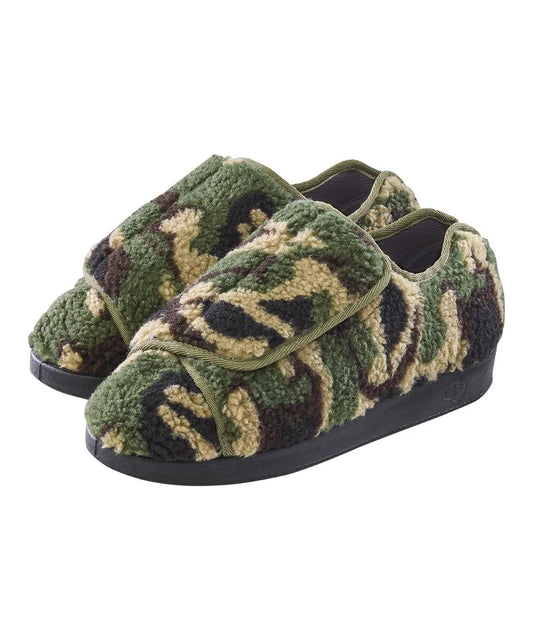Author: Zarif Ahmed
When someone is diagnosed with dementia or Alzheimer’s, daily routines like getting dressed can become challenging. What was once a simple part of the morning becomes a confusing, frustrating, and sometimes even distressing experience. But there is good news: adaptive clothing can make this process significantly easier, preserving comfort, autonomy, and most importantly, dignity.
This guide is for caregivers, family members, and care professionals looking to better support people living with memory loss. From thoughtful design elements to real-world success stories, here's how adaptive fashion can ease the burden and bring moments of calm into the dressing routine.
The Challenge: Dressing With Dementia
For people with dementia, cognitive decline can lead to difficulty with basic dressing tasks like identifying clothing items, manipulating small buttons, or understanding the order in which garments should be put on. Additionally, sensory sensitivities can make traditional clothing feel uncomfortable or even distressing.
Caregivers often describe mornings as one of the most difficult times of the day. Patients may resist dressing, become agitated by textures or confusion, or even attempt to undress repeatedly due to discomfort.
One caregiver, Sheila, shared: “My mother didn’t want help, but she’d get overwhelmed by buttons or zippers. It would frustrate her, and then she’d refuse to get dressed at all.” These situations are not just inconvenient—they create tension in what should be a peaceful, caring start to the day.
The emotional and physical toll of these daily interactions builds over time. Caregivers report feeling helpless or even guilty when they can’t make dressing easier. But the issue isn’t a lack of compassion—it’s a lack of the right tools. And this is where adaptive clothing comes in.
How Adaptive Clothing Helps
Adaptive clothing is specially designed to simplify the dressing process for people with limited mobility, cognitive impairment, or sensory needs. For dementia care, it can:
-
Reduce Confusion: Simple closures like magnets or Velcro make it easier for individuals to dress themselves or to be dressed without distress.
-
Support Independence: Clothing designed for easy-on, easy-off dressing lets individuals retain autonomy longer.
-
Improve Comfort: Soft, tagless, breathable fabrics help minimize sensory triggers.
-
Enhance Dignity: Adaptive clothing looks like "regular" fashion, avoiding clinical or stigmatizing designs.
These garments often feature discreetly hidden adaptive elements. Magnetic closures mimic buttons, back overlaps mimic regular seams—creating a sense of normalcy. Some even integrate textures and cuts familiar to the wearer’s personal history, offering an added layer of reassurance and comfort.
Adaptive fashion helps not just with the task of dressing, but with confidence. When someone feels more in control, their entire demeanor shifts. For dementia patients, this can mean fewer emotional outbursts, less resistance to care, and more peaceful transitions throughout the day.
Key Features to Look For
When selecting adaptive clothing for someone with dementia, prioritize these attributes:
-
Magnetic Closures: Replaces tiny buttons with easy-align magnetic snaps.
-
Open-Back Tops: Allows caregivers to dress the person without pulling garments over the head.
-
Elastic Waist Pants: Easy to pull on and off, especially for toileting.
-
Tagless Interiors: Reduces irritation for those sensitive to tags or seams.
-
Familiar Styles: Avoids unfamiliar cuts that might cause confusion or distress.
These features combine practicality with empathy. Choosing clothing designed for cognitive decline helps maintain routines, reinforces identity, and reduces the physical and emotional effort involved in dressing.
Fabric also plays a crucial role. Look for soft bamboo, modal, or brushed cotton. These materials are gentle on aging skin and help regulate temperature—an important factor for individuals with dementia who may not be able to communicate discomfort clearly.
Real-Life Impact: The Story of Henry
Henry, a former school principal, was diagnosed with Alzheimer’s in his late seventies. As his condition progressed, his family noticed that he was increasingly resistant to getting dressed in the morning. His wife, Marlene, explained:
“He’d always been proud of his appearance, but suddenly he couldn’t stand his usual button-down shirts. He’d get flustered, and we’d argue every morning. It was heartbreaking.”
A geriatric nurse recommended adaptive shirts with magnetic closures. Henry began wearing the Men’s Long-sleeve shirt with Magnetic Closures, which looked just like his usual wardrobe staples.

“Everything changed,” Marlene said. “He could dress with a little help, but he didn’t feel helpless. He even smiled when he looked in the mirror again.”
This story is not unique. Many families report that the shift to adaptive clothing improves mood, strengthens routines, and restores a sense of normalcy. It also creates moments of shared success between caregivers and loved ones—small victories that carry significant emotional weight.
Caregiver-Friendly Solutions
Dressing someone with dementia isn’t just about speed—it’s about minimizing emotional distress for both parties. Adaptive clothing designed for assisted dressing helps caregivers in several ways:
-
Less Physical Strain: Open-back tops reduce the need for lifting or maneuvering stiff limbs.
-
Shorter Dressing Time: Magnetic or Velcro closures save precious minutes in the morning.
-
Fewer Disruptions: Comfortable clothes reduce the urge to undress or tug at fabric.
Products like the Women’s Lace Trim Nightgown are a favorite among caregivers in memory care facilities. They allow for gentle dressing without disturbing the wearer, particularly for bedtime or post-bath routines. This also helps maintain skin health, especially for those with fragile skin or limited mobility.

When Style Matters: Preserving Identity
People with dementia are still individuals with a sense of personal style. Clothing that reflects their personality helps reinforce identity, even as memory changes. Familiar styles, favorite colors, and recognizable textures can provide comfort and even joy.
One adult daughter shared: “We found a magnetic blouse that looked exactly like the one my mom used to wear to church. She lit up when she saw it. It was like a piece of her came back.”
Wearing something that feels familiar and stylish can boost confidence and prevent the sense of being treated "differently." Adaptive fashion isn’t about compromise. It’s about meeting people where they are—and helping them feel more like themselves every day.
The Women’s Notched top with back overlap is a great example—made from breathable material that feels like luxury loungewear, but styled to match everyday outfits. It’s adaptive, yes, but no one would ever guess it wasn’t just a stylish staple.

Common Dressing Challenges in Memory Care
Here are a few challenges often faced in memory care settings, and how adaptive clothing can help:
-
Repeated Undressing: Choose secure, comfortable clothes that don’t irritate or overheat.
-
Mismatched or Inappropriate Outfits: Use pre-selected, simple wardrobe options to reduce confusion.
-
Difficulty with Toileting: Elastic or tear-away bottoms help preserve dignity and prevent accidents.
-
Resistance to Assistance: Soft, flexible fabrics and open-back designs reduce the need for tugging or pulling.
Care staff at several long-term care homes have implemented uniform adaptive wardrobes for residents with dementia, reporting smoother dressing routines and fewer behavioral incidents around clothing. It’s proof that small changes can lead to measurable improvements in care.
Practical Wardrobe Staples from June Adaptive
To build a dementia-friendly wardrobe, consider these essentials:

These products balance comfort, practicality, and dignity—exactly what’s needed in memory care environments. Each piece is chosen not just for ease of use, but for how it respects the wearer’s self-image.
Caregiver Tips: Dressing With Compassion
Here are a few best practices from professional caregivers:
-
Lay out clothes in the order they should be put on.
-
Offer simple choices ("this shirt or that one?").
-
Keep a calm, upbeat tone.
-
Avoid rushing; give time for each step.
-
Celebrate small successes with positive reinforcement.
One caregiver shared, "I let my dad help pick his shirt even if he can’t button it himself. It gives him agency and sets a positive tone for the day."
Small changes in communication and tone can make a world of difference. The right clothes and a thoughtful approach can transform a challenging task into an opportunity for connection.
Creating a Calm Dressing Environment
Beyond clothing itself, the environment in which someone dresses can significantly impact their experience. For people with dementia, overstimulation or clutter can heighten confusion and agitation.
Try dressing in a quiet, well-lit space with minimal distractions. Use soft, calming colors for the room and keep only a few clothing options visible at a time. Consider labeling drawers or using picture guides to support recognition and decision-making.
Even background music or a familiar scent—like a favorite hand lotion—can turn dressing from a chore into a moment of peace. Routine is powerful in memory care, and combining adaptive clothing with a consistent, soothing environment can improve the day for everyone involved.
Conclusion: Dignity Is Always in Style
Dressing with dignity shouldn’t disappear with a diagnosis. Adaptive clothing helps people with dementia maintain comfort, identity, and independence. For families and caregivers, it offers relief, speed, and a deeper connection to the ones they love.
Whether you’re building a post-diagnosis wardrobe or just searching for a better morning routine, June Adaptive is here to help.
Explore the full memory care-friendly collection at JuneAdaptive.com.

















